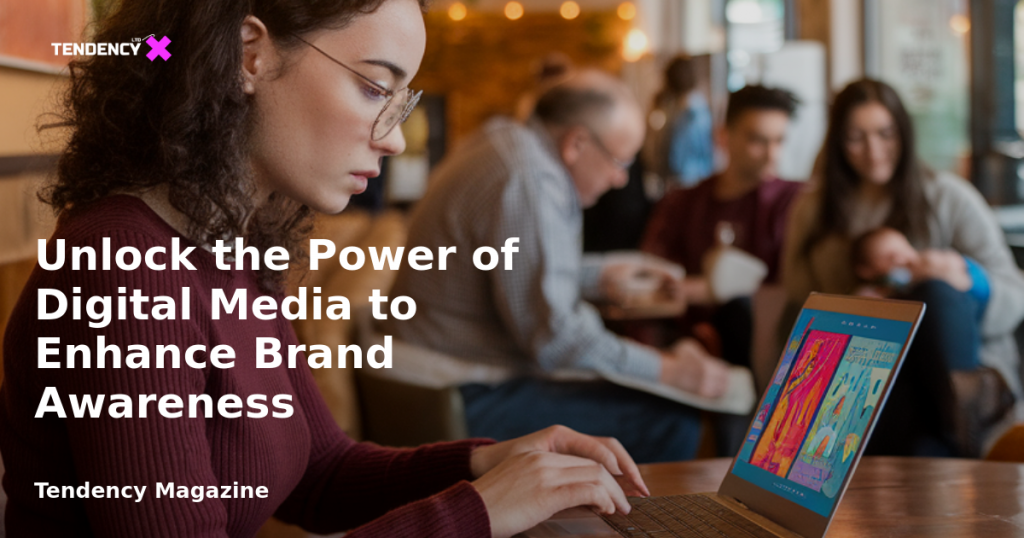Unlock the Power of Digital Media to Enhance Brand Awareness

What is Digital Media?
In today’s fast-paced digital world, building brand awareness is more crucial than ever. While traditional advertising methods like TV commercials and billboards can be effective, they often come with a hefty price tag. In 2025, for instance, securing a 30-second commercial spot during the Super Bowl cost nearly $8 million. Outside of such high-profile events, the average cost of a 30-second commercial exceeds $100,000, and renting a billboard in a major city can cost up to $14,000 a month. These figures highlight the financial burden of traditional media. However, digital media offers a more accessible and cost-effective alternative, leveling the playing field for small to medium-sized businesses. By harnessing digital media, businesses can launch targeted marketing campaigns and reach their audience more efficiently and affordably.
Table of Contents
- What is Digital Media?
- Types of Digital Media
- Digital Media vs. Traditional Media: Key Differences
- How to Develop a Digital Media Strategy
- Resources to Refine Your Digital Media Skills
- Digital Media FAQ
Types of Digital Media
Owned Media
Owned media refers to content that a brand creates and controls on its platforms, such as websites, blogs, email newsletters, and social media accounts. This type of media allows brands to deliver value to their audience without overtly advertising. For example, a fitness equipment company might use owned media to promote sales through social media posts and emails, while also sharing educational content on their blog and YouTube channel.
Paid Media
Paid media involves purchasing ad space on external platforms like websites, social media, and streaming services. This can significantly boost brand awareness by increasing the visibility of content. Paid media is often more polished and sales-focused, and can be optimized by targeting specific audiences and embedding links to an ecommerce store. For instance, a sponsored Instagram post by an apparel brand can effectively convey a transactional message to potential customers.
Earned Media
Earned media is the organic exposure a brand receives without direct payment or creation. This includes media coverage, customer reviews, social media shares, influencer mentions, and backlinks. Earned media is particularly powerful for building trust, as it serves as external validation of a brand’s value. Brands can amplify earned media by sharing it on their platforms and maintaining strong relationships with influencers, journalists, and customers.
Digital Media vs. Traditional Media: Key Differences
When comparing digital media to traditional media, several distinctions emerge:
- Format: Digital media is primarily online, while traditional media includes print, radio, TV, and billboards.
- Interactivity: Digital media allows for user engagement through clicks and shares, whereas traditional media is typically one-way communication.
- Cost: Digital campaigns are generally more cost-effective and quicker to produce than traditional media.
- Editability: Digital content can be updated in real-time, unlike traditional ads.
- Tracking: Digital media offers real-time performance metrics, aiding in budget optimization.
- Reach: Digital media targets specific audiences, while traditional media can reach broader, offline audiences.
Choosing between digital and traditional media depends on budget, audience, and marketing goals. Often, a blend of both is most effective.
How to Develop a Digital Media Strategy
Creating a successful digital media strategy involves several key steps:
- Define Clear, Measurable Goals: Use the SMART framework (Specific, Measurable, Achievable, Relevant, Time-based) to set quantifiable goals, such as increasing Instagram engagement or improving click-through rates.
- Understand Your Target Audience: Utilize social media insights, focus groups, and research reports to identify and understand your audience’s preferences and behavior.
- Choose Your Platforms: Determine where your audience spends their time online and select the appropriate platforms for engagement.
- Plan Your Budget: Allocate resources wisely across channels, using analytics tools to measure marketing ROI and adjust strategies as needed.
Resources to Refine Your Digital Media Skills
To execute a comprehensive digital media strategy, you may need to enhance your skills or build a team. Here are some resources:
- Online Courses: Platforms like Coursera and LinkedIn Learning offer courses in graphic design, digital advertising, and more.
- Digital Creative Tools: Tools like Canva and Adobe Express enable easy content creation without a design background.
- Industry Trend Reports: Stay updated with reports from digital media companies and social media platforms to inform your strategy.
Digital Media FAQ
What is an example of digital media?
Digital media includes YouTube videos, blog posts, or email newsletters designed for digital consumption on devices like phones and computers. It facilitates direct interaction with ecommerce brands.
What does a digital media job entail?
Digital media roles involve creating, managing, and analyzing content across platforms to boost engagement and visibility. Positions may include graphic designers, social media specialists, and digital marketers.
Are digital media and social media the same?
Social media is a subset of digital media focused on community engagement, while digital media encompasses all digital formats for communication and content sharing online.
In conclusion, digital media presents an invaluable opportunity for businesses to enhance brand awareness and connect with their audience in meaningful ways. By understanding and leveraging the various types of digital media, companies can craft effective strategies that drive engagement and growth.
2025 Tendency LTD. All rights reserved.

